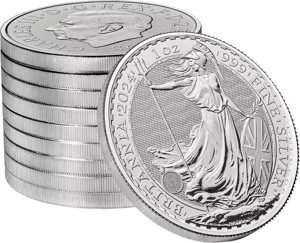Tavex uses cookies to ensure website functionality and improve your user experience. Collecting data from cookies helps us provide the best experience for you, keeps your account secure and allows us to personalise advert content. You can find out more in our cookie policy.
Please select what cookies you allow us to use
Cookies are small files of letters and digits downloaded and saved on your computer or another device (for instance, a mobile phone, a tablet) and saved in your browser while you visit a website. They can be used to track the pages you visit on the website, save the information you enter or remember your preferences such as language settings as long as you’re browsing the website.
| Cookie name | Cookie description | Cookie duration |
|---|---|---|
| tavex_cookie_consent | Stores cookie consent options selected | 60 weeks |
| tavex_customer | Tavex customer ID | 30 days |
| wp-wpml_current_language | Stores selected language | 1 day |
| AWSALB | AWS ALB sticky session cookie | 6 days |
| AWSALBCORS | AWS ALB sticky session cookie | 6 days |
| NO_CACHE | Used to disable page caching | 1 day |
| PHPSESSID | Identifier for PHP session | Session |
| latest_news | Helps to keep notifications relevant by storing the latest news shown | 29 days |
| latest_news_flash | Helps to keep notifications relevant by storing the latest news shown | 29 days |
| tavex_recently_viewed_products | List of recently viewed products | 1 day |
| tavex_compare_amount | Number of items in product comparison view | 1 day |
| Cookie name | Cookie description | Cookie duration |
|---|---|---|
| chart-widget-tab-*-*-* | Remembers last chart options (i.e currency, time period, etc) | 29 days |
| archive_layout | Stores selected product layout on category pages | 1 day |
| Cookie name | Cookie description | Cookie duration |
|---|---|---|
| cartstack.com-* | Used for tracking abandoned shopping carts | 1 year |
| _omappvp | Used by OptinMonster for determining new vs. returning visitors. Expires in 11 years | 11 years |
| _omappvs | Used by OptinMonster for determining when a new visitor becomes a returning visitor | Session |
| om* | Used by OptinMonster to track interactions with campaigns | Persistent |
| Cookie name | Cookie description | Cookie duration |
|---|---|---|
| _ga | Used to distinguish users | 2 years |
| _gid | Used to distinguish users | 24 hours |
| _ga_* | Used to persist session state | 2 years |
| _gac_* | Contains campaign related information | 90 days |
| _gat_gtag_* | Used to throttle request rate | 1 minute |
| _fbc | Facebook advertisement cookie | 2 years |
| _fbp | Facebook cookie for distinguishing unique users | 2 years |
What is a Troy Ounce?

When it comes to investing in precious metals like gold and silver understanding the measurement of their weight is crucial. One of the most commonly used weight measurements in the world of bullion and precious metals is the Troy ounce.
In this article, we will delve into the definition, history, and significance of the Troy ounce.
Troy Ounce Definition

A Troy ounce (symbol: oz t or oz tr) is a unit of mass used in the precious metals industry
Unlike the standard or avoirdupois ounce used in everyday contexts, the Troy ounce is specifically designed for measuring the weight of precious metals.
It is commonly employed to weigh and price items like gold bars, coins, and jewellery.
The History of the Troy Ounce

The origin of the Troy ounce can be traced back to the Roman monetary system.
The Troy Ounce is believed to have been named after the city of Troyes in France, a prominent trading center during the Middle Ages
The Troy ounce was widely adopted in the trade of precious metals due to its accuracy and consistency.
During the Middle Ages, various regions in Europe had their own systems of weight measurement, leading to confusion and disputes in trade.
The Troy ounce provided a standardised and reliable method for measuring precious metals, reducing the risk of fraud and disputes in the marketplace.
How Does the Troy Ounce Differ from the Avoirdupois Ounce?

It’s important to note that the Troy ounce is slightly heavier than the avoirdupois ounce commonly used in the United States for everyday purposes.
While an avoirdupois ounce equals approximately 28.35 grams, a Troy ounce is equivalent to approximately 31.10 grams
This difference may seem minor, but it can significantly impact the pricing and valuation of precious metals.
The Significance of the Troy Ounce in the Precious Metals Industry

The Troy ounce plays a pivotal role in determining the value and precious metals price worldwide. When you buy or sell gold, silver, platinum, or palladium, the price is typically quoted in terms of Troy ounces. For example, if the current market price of gold is $1,800 per Troy ounce, a 1-ounce gold coin would be valued at $1,800.
Troy Ounces and Bullion
In the world of bullion, understanding Troy ounces is essential. Bullion refers to precious metals in the form of bars, coins, or rounds that are traded and stored for investment purposes.
Bullion products are often standardised in terms of their Troy ounce weight, making it easy for investors to assess their value.
Conclusion
A Troy ounce is a specialised unit of measurement in the metric system specifically used for precious metals like gold and silver. Its historical origins can be traced back to the Middle Ages, and it has become the standard for the precious metals industry worldwide. It is a renowned measurement among all bullion mints such as The Royal Mint.
When investing in gold or silver or trading precious metals, knowing the weight in Troy ounces is crucial for accurate valuation. Whether you are purchasing a one ounce gold coins, silver bars, or other forms of bullion coins, understanding the Troy ounce is a fundamental aspect of navigating the world of precious metal investments and the London Bullion Market.
So, next time you consider buying or selling precious metals, keep in mind and please note the significance of the Troy ounce in this fascinating and lucrative market.



















